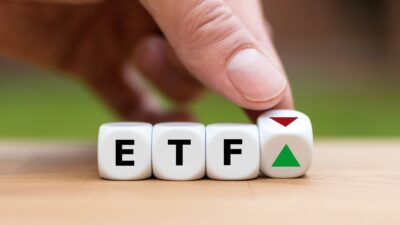Lindsell Train Global Equity is one of the most popular global equity funds in the UK. It’s not hard to see why. Since its launch in 2011, it’s delivered a return of around 380% for investors, beating the market by a wide margin.
For many years, Lindsell Train Global Equity has been a core holding for me. However, I recently decided to sell out of the fund. Here, I’ll explain why. I’ll also discuss where I reinvested the proceeds of the sale.
The 3 reasons I sold Lindsell Train Global Equity
The first reason is that since I invested in it back in 2013, I’ve built up substantial positions in many of the stocks it holds, such as Diageo, Unilever, and London Stock Exchange. So there was a fair bit of overlap between the fund and my stock holdings.
The second reason is that the fund has a very high level of exposure to the Consumer Staples sector (43% at the end of August). I do like this sector as a whole, but it’s not the sector I’m most bullish on from a long-term point of view. I’m more drawn to the technology sector and Lindsell Train Global Equity has a lighter allocation to this sector.
Finally, the fund’s performance has been a little disappointing recently. Indeed, over the last three years, the fund’s underperformed its benchmark. This comes back to the lack of technology exposure. Not owning large-cap tech stocks such as Microsoft, Apple, and Alphabet has hurt performance.
I’ll point out that I still believe Lindsell Train Global Equity is an excellent fund. I really like portfolio manager Nick Train’s long-term, buy-and-hold approach. However, after looking at my portfolio as a whole, I decided the fund was no longer the best option for me.
Where I invested the money
After selling the fund, I reinvested the proceeds into two funds, with the majority (80%) going into the Sanlam Artificial Intelligence fund. The reason is I expect the artificial intelligence (AI) industry to experience tremendous growth over the next decade and I want to have portfolio exposure.
This fund provides me with exposure to the theme with stocks such as Globant, Upstart, and Keyence, which are all active in the AI space. I like the fact that performance here has been very strong in recent years (three-year return of more than 100%) and fees are very reasonable (0.52% per year through Hargreaves Lansdown).
This fund’s a much higher risk than Lindsell Train Global Equity, but I’m comfortable with this.
I then used the remaining 20% to top up my holding in the Threadneedle European Select fund. The reason I added to this fund is that I see it as a good portfolio diversifier. And I really like some of the holdings such as ASML, LVMH, and Pernod-Ricard.
Again, this fund is higher risk than Lindsell Train Global Equity because it’s purely focused on Europe. However, its performance track record is solid.
After this switch, I now own five funds in my ISAs and SIPP. They are:
-
Fundsmith Equity
-
Blue Whale Growth
-
Sanlam Artificial Intelligence
-
Threadneedle European Select
-
Polar Capital Global Technology
I feel these funds will be able to grow my wealth over the long term.






